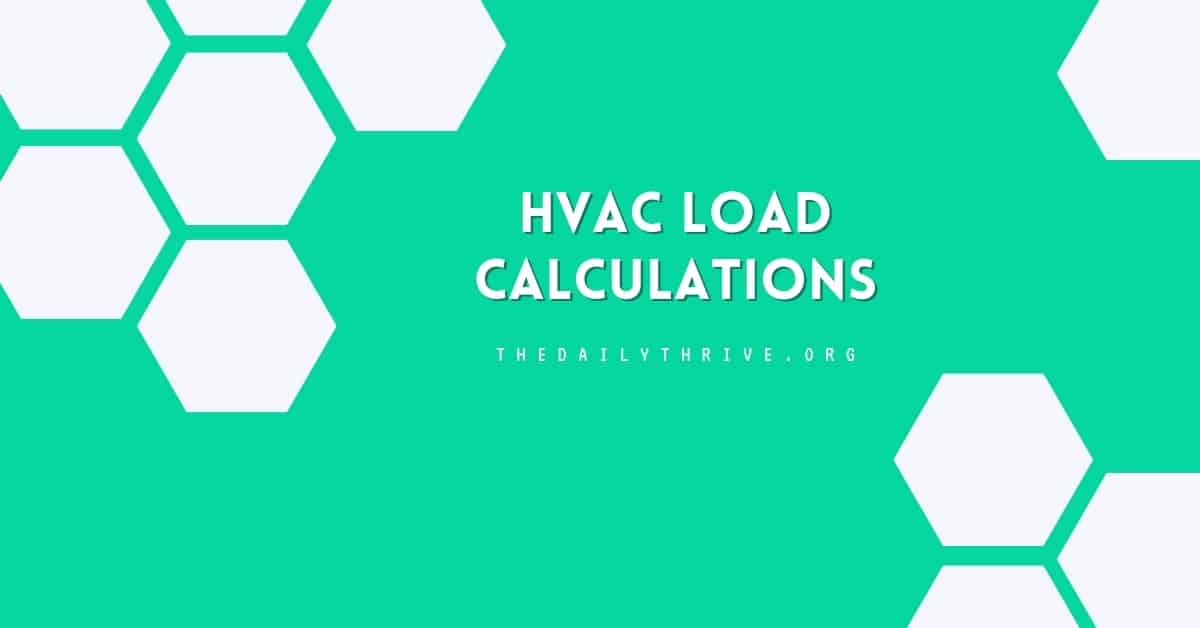Your house is probably a different size and shape and built with different construction materials. One size really doesn’t fit all. Before you get a new heating and cooling system installed, you’ll need an HVAC load calculation performed.
Calculating accurate heating and cooling loads has a huge impact on an air conditioner’s ability to efficiently heat and cool a location. The first step in designing a new air conditioning system includes factoring in the max heating and cooling loads. Load calculations directly relate to overall energy efficiency as well as building durability, air quality, and indoor comfort.
Here we detail what HVAC heating and cooling loads are and how they impact the efficiency and overall life of your air conditioning unit.
What Are HVAC Heating And Cooling Load Calculations?
According to the US Department of Energy, “Heating and cooling loads are the measure of energy needed to be added or removed from space by the HVAC system to provide the desired level of comfort within a space. Right-sizing the HVAC system begins with an accurate understanding of the heating and cooling loads on a space.“
The numbers derived from these calculations will predict the size and type of HVAC equipment best suited to a specific space.
The Department of Energy estimates that over half of HVAC contractors in the United States size heating and cooling systems incorrectly.
Many people wonder if this process is really all that important, and we guarantee it truly is. Otherwise, you are left guessing what size air conditioning unit to install, which can have disastrous results.
Drawbacks To An Oversized (And Undersized) Air Conditioning Unit
Only after calculating accurate heating and cooling loads can the correct HVAC system be identified and installed. The size of your air conditioning system should be directly related to the size of your home. You do not want an oversized HVAC system for a number of reasons.
HVAC system that is too large will cause the system to cycle on and off too often, which can reduce the unit’s overall life and increase energy costs. This is similar to driving a car; if you constantly go from very fast to very slow, you will use more fuel energy, as opposed to driving at one consistent speed. Plus, you will be applying more pressure to the breaks and engine, which as a result, will require repairs sooner.
An air conditioning system that is too large costs more to initially install and also costs more to operate over time. If the HVAC equipment is constantly forced to start up and stop, it is likely to experience premature failure.
Short cycles also do not provide adequate time for the air to dehumidify, creating cold and clammy rooms that are not very comfortable at all. An AC system should operate long enough to produce condensation. If the system shuts off before reaching this point, excess humidity can build up and cause mold to grow within your house.
If an air conditioning unit is too small for a building, you will encounter equally inefficient results. If a unit is not powerful enough to cool down an entire house, it will run, run, and run some more and possibly never reach the desired temperature. As a result, units that are too small for a location can utilize an overabundance of costly energy without producing very good results.
What Components Are Taken Into Consideration When Calculate HVAC Load?
There are so many different components that contribute to the equation representing how big your HVAC system should be. The overall design of the structure and its exposure to wind must be taken into consideration, as well as the purpose of the building and the hours the air and heat will most often be in use.
Calculating HVAC loads for an energy-efficient air conditioning unit includes a number of factors, such as:
- Geography, a home located within the same region but situated in a valley as opposed to the top of a hill, can change figures.
- Hours that you plan to utilize heating and to cool the most.
- How many windows are in the house, as well as which direction a building faces in relation to these windows?
- Weather conditions within the area, including wind path and speed, humidity, and temperature.
- The desired air temperature indoors.
- The temperature of adjoining areas that may not be heated or cooled
- Selection of the coefficient heat transmission.
- Factors pertaining to the outdoor area where heat will be dissipated
- Materials used on a building that will contribute to heat loss, such as glass or bricks.
- Heat loss is associated with the underground area.
ACCA Manual J Load Calculations
The most proven method for sizing HVAC equipment is an ACCA (Air Conditioning Contractors of America) Manual J load calculation. Many factors go into the load calculation, including your geographical location (climate), building orientation (which direction does the front door face), R-values of your wall, roof and floor insulation, window size & type, and how many people and appliances to name just a few. We have an easy-to-use Project Summary along with videos to help you complete the forms that gather all the data needed for an accurate Manual J.
The Secret To A Long-Lasting and Energy Efficient HVAC System
When it comes time to install a new air conditioning unit, it might be tempting to do it yourself or hire a cheap contractor with little to no experience. This is not the recommended course of action unless you want to pay more in energy bills and have to replace your system prematurely. A properly installed air conditioning unit starts with the calculation of heating and cooling loads.
The first step in ensuring maximum HVAC energy efficiency and performance is an accurate Manual J load analysis using ACCA-certified software. A common practice is to just replace their existing air conditioner with the same size as a newer model. What if your existing air conditioner wasn’t properly sized originally? Then it’s just a newer, improperly sized system. Or what if your home has been updated with new windows or higher R-value insulation? And let’s not forget that a 4.0 ton 1980s A/C is far less efficient than a new higher-efficiency model.






